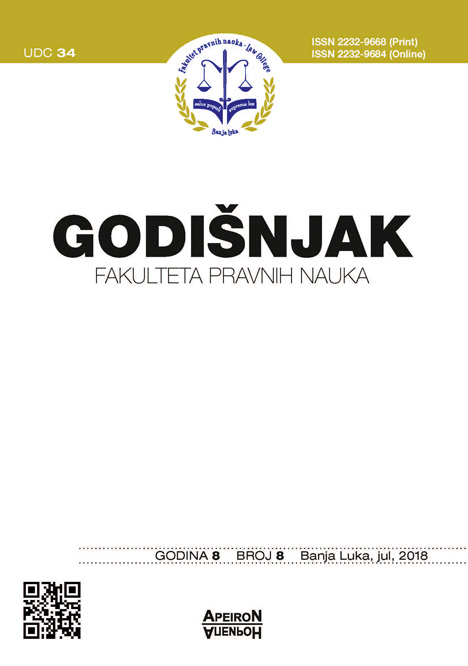Basic Characteristics of Practical Application the Simplified Forms of Procedures in Criminal Cases of the Republic of Srpska // Osnovne karakteristike praktične primjene pojednostavljenih formi postupanja u krivičnim stvarima Republike Srpske
DOI:
https://doi.org/10.7251/GFP1808268KAbstract
In the context of numerous measures taken to increase the efficiency of criminal proceedings, a special place belongs to the simplified forms of criminal cases proceedings. Inspired by the desire for saving time, costs and labour and avoiding formalities which seem unnecessary in routine cases, the simplified procedural forms are proposed to traditional criminal proceedings. In this context, the systematic reform of criminal procedural legislation has been executed, both at the level of Bosnia and Herzegovina and in its entities and the Brcko District BiH which has opened a completely new approach to criminal proceedings, in which the emphasis is not only on enhancing the protection of basic human rights and freedom but also the efficiency of the proceedings. The range of simplified and shortened procedures, the new criminal proceedings legislation in the Republic of Srpska is known through the following forms: witness immunity (Article 149 of the Law on the Criminal Procedure of the Republic of Srpska), plea of guilty (Article 244 of the Law on the Criminal Procedure of the Republic of Srpska), plea bargaining (Article 246 of the Law on the Criminal Procedure of the Republic of Srpska), procedure for issuing penal order (Article 358 of the Law on the Criminal Procedure of the Republic of Srpska). In this paper it will be discussed about practical application of the institutes from the aspect of the efficiency of criminal proceedings of the Republic of Srpska. The basic method that will be used in the theoretical part of the paper is a dogmatic and normative method, while in the second part of the paper the statistical method will be used.Downloads
Published
2018-07-24
Issue
Section
Чланци
